- Register
- Log in to Tune-In
- Wishlist (0)
-
Shopping cart
(0)
You have no items in your shopping cart.
Beatles News

Alec Baldwin hasn't minced words when it comes to Paul McCartney!
On the Wednesday, May episode of the Our Way with Paul Anka and Skip Bronson podcast, the former 30 Rock star, 66, opened up about the time he jokingly called the Beatles musician, 81, an "asshole."
While discussing his experience living in Los Angeles, Baldwin spoke about a yoga class he'd attend with a group of well-known friends.
"I used to take a yoga class with Lorne [Michaels], John Eastman, who's Paul's brother in-law, John Alexander, the painter, Lorne and I, there were five of us. We would take a yoga class. We called ourselves the 'yoga boys,'" he began.
Alec Baldwin in New York City in December 2022.
Baldwin continued: "And the only one who was really adept at yoga was McCartney. He would do a handstand or a headstand and he had the most lithe body you've ever seen — and back then he was in his late '60s — and he was so fit. One time he does a headstand before he leaves, and he gets up and whispers to me, he goes, 'I'm gonna go take my daughter to lunch. I'll see you guys later.'"
The Blue Jasmine actor then joked he had some choice words for McCartney.
"I looked up at him after he does t details

The late Beatles icon's sitar has been sold at auction for the impressive amount.
George Harrison's sitar has been sold at auction for $66,993 (£53,520).
The Beatles icon - who died in November 2001, aged 58 - bought the instrument on Oxford Street, London in 1965 and used it during the recording sessions for Norwegian Wood, which featured on the band's Rubber Soul album.
Now, the iconic sitar has sold at Nate D. Sanders Auctions in Los Angeles for an eye-watering sum of money.
Harrison visited India for the first time in 1966, where he studied the sitar under the tutelage of Ravi Shankar.
The medieval Indian instrument ignited Harrison's lifelong passion for the country's music and culture as well as Hindu spirituality, while encouraging the use of sitars among other Western musicians.
The Beatle subsequently created a series of Indian-style compositions on the likes of Within You Without You and Love You To.
Source: radiox.co.uk
details
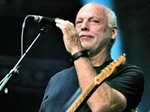
“I’m surprised Paul allowed it”: David Gilmour says he found The Beatles Get Back documentary “a hard watch”
David Gilmour says he was surprised that Paul McCartney allowed The Beatles‘ 2021 documentary Get Back to be made, having admitted he found it a “difficult watch”.
The eight-hour long documentary was pieced together by Lord Of The Rings director Peter Jackson after he was given over 60 hours of unused archive footage from when the Fab Four were recording 1970’s Let It Be, which ended up being their final album. Naturally, however, it does paint a picture of the discord in the band at the time which contributed to them parting ways.
In the new print edition of Uncut, the Pink Floyd guitarist says he can often be found watching documentaries about bands from the ’60s and ’70s, meaning Get Back would probably be right up his street.
Explaining why he found it difficult viewing, he points to “Paul being domineering and and John ducking back because of the moment he was in at the time and George leaving and coming back. Horrible, really, I mean it’s lovely for us to watch, but I’m surprised Paul allowed it.&rdq details
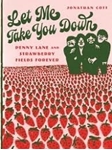
Beatles fans in 1967 likely remember when they first heard the two-sided single: Penny Lane and Strawberry Fields Forever. I didn’t put myself in the Beatles-fan category but regularly heard those songs. I even bought upon release the other two-sided Beatles single of 1967, All You Need is Love and Baby You’re a Rich Man.
Jonathan Cott is not simply a Beatles fan. He is among the world’s leading experts on all things Beatles. His new book, perfectly titled “Let Me Take You Down,” puts Penny Lane and Strawberry Fields Forever in their broader context. If there is anything you ever wondered about either song Cott likely answers it in his 150-page book.
“The Best Record We Ever Made”
That’s how George Martin, known as “the fifth Beatle” for producing many of the group’s original albums, described Penny Lane/Strawberry Fields Forever. The New Yorker’s Adam Gopnik says the record “was the single most significant work of art produced in the 1960’s.”
Really?
I was astounded to read both comments. I would never list either song in the pantheon of Beatles top tunes but Cott builds a strong case for both.
details
"The Lost Weekend: The Photography of May Pang" features candid photos of John Lennon by his former lover and confidant, May Pang. The exhibit will be on view at Gallery 42 in Mason on Tuesday and Wednesday, and Pang will be in attendance.
John Lennon appears in candid form in a series of photographs on display in Mason this week.
On Tuesday and Wednesday, "The Lost Weekend: The Photography of May Pang" will be on view at Gallery 42 in Mason. The photos were taken between 1973 and 1975 during a highly creative time during Lennon's life.
May Pang will be in attendance at the free exhibition that details an 18-month period of the Beatles singer's life in which she was his lover and companion. She took photos in a comfortable, relaxed environment, so his personality shines through.
That 1½-year period during which the photos were taken was known as the "Lost Weekend." During this period, he produced many independent songs post-Beatles, partnering with the likes of David Bowie, Nilsson, Mick Jagger, Ringo Starr and others. That period also brought about his albums "Mind Games" and "Walls and Bridges."
The exhibit also includes the only photograph that exists of John Lennon signing the details

There are few people as well-connected in rock as Alice Cooper. The man born Vincent Furnier has tales for days. You name them, Alice Cooper has hung out with them, recorded with them, got drunk with them, got sober with them, played golf with them. Cooper already had enough stories to last a hundred lifetimes when he formed his rock supergroup the Hollywood Vampires in 2015 and now he’s got a ton more. Speaking to this writer for Classic Rock a few years ago, he said the new band – named after the drinking crew he was part of in the 70s with Keith Moon, Ringo Starr, Harry Nilsson, John Lennon and more – has provided him a series of late-career highs.
“The idea was to play songs for all of our dead drunk friends, the Jimi Hendrixs, the Jim Morrisons,” he explained of the group he formed with Johnny Depp, Joe Perry and Tommy Hendriksen. “People had no idea that Johnny Depp was a great guitar player. They think he’s a movie star trying to be a guitar player. Well, he’s playing with Jeff Beck, playing with the Stones. You don’t play with those guys unless you know what you’re doing. You get in that room and you’ve got Duff McKagan on bass and Joe Perry on gu details
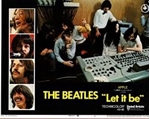
Fans of The Beatles will never “let it be.”
Tomorrow night, the movie of that name – restored with added footage — will be screened in New York. Disney Plus starts airing it at the end of the week on their streaming platform. (A Los Angeles screening is planned for later in the week.)
Who’s coming to this last round up? Paul McCartney might be in town. His exhibition of photographs opens later this week at the Brooklyn Museum.
Ringo Starr has just dropped “Crooked Boy,” an excellent EP written and produced by Linda Perry. His tour doesn’t start for a month, so maybe he’d come into New York.
No word yet on Olivia or Dhani Harrison, or Sean Ono Lennon. Yoko Ono is not going out much these days, which is no surprise at age 91. She can watch it at home!
Peter Jackson restored the film made by Michael Lindsay Hogg, which was a hit in 1970 but then not seen for years. (It floated around the internet.) Jackson used all of L-H’s footage to make his “Get Back” series a few years ago, which expanded on the original film. Lindsay-Hogg will be on hand for the screening and Q&A afterwards. Hopefully someone will tape the event details
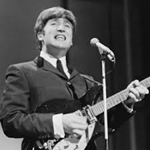
The Beatles succeeded in large part due to the chemistry evident whenever the four men plugged into play. They honed that chemistry via years of playing live shows, as they learned how to complement each other on both their original songs and choice covers.
But there were a few times during their amazing run where individual members would go sort of solo, even though those songs were released on Beatles albums. Let’s rank the best six of these Beatles/solo tracks.
6. “Good Night”
The White Album is the source for many of these recordings featuring just one of The Beatles. After all, it was a time when the group was churning out a ton of material and weren’t always waiting on the others to do it. “Good Night” is the only one of these songs, however, where the lone member appearing didn’t write the track. Ringo Starr was given the opportunity to close out the double album with this lullaby, credited to John Lennon and Paul McCartney (although by all accounts Lennon did most of the writing). And Starr does a charming job with it, even if the song isn’t too substantial.
5. “Julia”
Many folks know how John Lennon addressed details
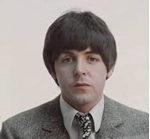
Paul McCartney said The Beatles faced a major problem at the start of their careers. He shared how they decided to handle it.
Before Ringo Starr joined The Beatles, John Lennon, Paul McCartney, and George Harrison worked with a different drummer. Pete Best traveled to Germany with The Beatles when they played in Hamburg. Best never reaped the prolific benefits of the band’s success, though. They fired him just before hitting it big, which McCartney described as one of the most difficult things they ever had to do.
In 1962, The Beatles auditioned for producer George Martin. While Martin saw potential in the band, he didn’t see a path forward for them with Best. He asked them to consider finding a new drummer.
“He agreed to audition us, and we had a not-very powerful audition in which he was not very pleased with Pete Best,” McCartney said in The Beatles Anthology. “George Martin was used to drummers being very ‘in time,’ because all the big-band session drummers he used had a great sense of time. Now, our Liverpool drummers had a sense of spirit, emotion, economy even, but not a deadly sense of time. This would bother producers making a record. George took us to o details

Harrison bought the sitar from a Oxford Street shop called Indiacraft in 1965. He wrote the iconic Beatles hits 'While my guitar gently weeps' and 'Something'.
A traditional Indian instrument used by George Harrison to record a Beatles song has sold for over £53,000.
Harrison bought the 4ft long sitar from a small Oxford Street shop named Indiacraft between August and October 1965.
He later used the instrument to record the song, Norwegian Wood, in October 1965, launching 'the Great Sitar Explosion' in rock music.
Harrison took the sitar to Barbados on his and Pattie Boyd's January 1966 honeymoon and then gifted it as a thank you to his friend, George de Vere Drummond, after he let them stay at his house on the island.
Harrison is to be thanked for writing some of the Beatles most iconic songs, including 'While my guitar gently weeps', the highly acclaimed 'Here comes the sun' and 'Something'.
Source: Lettice Bromovsky/dailymail.co.uk
details
Number 1 record held by Beatles for almost 50 years finally toppled.
The Beatles nearly five decade old record has finally been broken. It’s been a long time coming but The Beatles have been defeated after almost five decades for the fastest accumulation of 12 chart topping albums in the UK.
It took John Lennon, Paul McCartney, George Harrison, and Ringo Starr 14 years to land 12 number one albums, completing the feat in 1977 with a live album.
This had secured a record lasting 47 years which had a reputation for being unbeatable – until now.
Unsurprisingly, megastar Taylor Swift, 34, has achieved the same incredible feat in just 11 years and six months with The Tortured Poets Department.
This makes the ME! hitmaker the only artist to have 12 consecutive albums reach the coveted top spot in as many years.
Her latest album has truly caused a stir and while everyone paternity tested her song lyrics, TTPD broke records left right and centre.
Source: Danni Scott/metro.co.uk
details
The Beatles' greatest b-side was ahead of its time, but it also exposed a difference of perspective between Lennon and McCartney.
Day Tripper, I Feel Fine, Revolution, Lady Madonna, Hey Jude, We Can Work It Out, She Loves You, I Want To Hold Your Hand, Don't Let Me Down… just some of The Beatles' classics that never made a studio album. That's how good the Paul, John, George and Ringo were in their seven years, seven months and 24 days together as a band. But there's a true Beatles b-side that fascinates even more than those songs, and it found them and their studio geniuses at the point of accelerated evolution.
“This is a song I wrote about people who are always moaning about the weather all the time,” John Lennon once said of the Revolver-era Rain. The word 'I' there suggesting the Lennon / McCartney credit the song carries needn't apply.
This is in contrast to Lennon's memory of the genesis of Rain's A-side, Paperback Writer's. "I think I might have helped with some of the lyrics," he told Hit Parader Magazine in 1972. "Yes, I did. But it was mainly Paul's tune." But he clearly saw Rain as his song. Indeed, in the same interview, it was one of a number of Beatles songs he listed details

Packed cinemas, sky-high record sales, and screaming hordes of teenage girls seem to be the collective memories of the peak of mid-sixties Beatlemania. The Beatles’ A Hard Day’s Night and its accompanying feature film, which celebrate their 60th anniversary this year, are an embodiment of the British Invasion of the 1960s. Featuring effortlessly crafted melodies with charming, albeit simplistic, lyrics, this album is packed with abundant charm and has contributed vastly to the band’s impact on modern pop. It seems that this album has always been in the background of my life – whether it be the opening track as a demo on our old Yamaha keyboard or the countless showings of the film on TV, Sunday after Sunday. Having reached number one in the UK and USA upon its release, there is no doubt that this album is truly beloved and deserves to be celebrated.
The opening track of the album has one of the most iconic opening bars of all time. George Harrison’s signature 12-string Rickenbacker punches the album open with its striking dissonance. This track works perfectly as the opening of this iconic album, and you’d be hard pressed to find a single person who doesn’t at least recognise th details
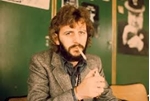
Ringo Starr was very proud of one Beatles song. He liked it so much that he borrowed from it while working on a solo hit.
In 1969, John Lennon, Paul McCartney, George Harrison, and Ringo Starr recorded The Beatles song “Get Back.” In 1972, Ringo Starr released a solo song that had some strikingly similar elements to The Beatles’ hit. He admitted he copied part of the song.
Ringo Starr took inspiration from a Beatles song in his career as a solo artist
Much of The Beatles’ experience recording Let It Be was agonizing. Beatles producer George Martin said the album was such an “unhappy” one that he was surprised the band reunited to record Abbey Road (per The Beatles Anthology). Still, there were some bright spots in the recording process. Starr said they enjoyed working together when they felt they were recording a good track.
“‘Get Back’ was a good track. I felt, ‘This is a kick-a** track.’ ‘Don’t Let Me Down’ also,” Starr said. “They were two fine tracks. Quite simple and raw — back to basics.”
He liked “Get Back” so much that he borrowed part of it for his own 1972 song, & details

A rare Cartier silver engraved box commissioned by John Lennon and Yoko Ono for their close friends is set to go on sale as a piece of music history.
The pair’s “Double Fantasy” box was crafted as a Christmas gift which Ono personally gave to the Beatles star’s bank manager at the Bank of Tokyo shortly after his death in December 1980. The cedar-encased box includes original accessories such as a blue pouch, outer case and paper wrapping, and reads inside “Double Fantasy Christmas 1980, NYC, John & Yoko”.
It is believed that only 12 of these exclusive boxes were ever made, making this piece an exceedingly rare find
The piece is to be auctioned at Catherine Southon Auctioneers & Valuers, in Kent, on May 15, with an estimated value of £3,000 to £5,000.
A spokesperson said: “It is believed that only 12 of these exclusive boxes were ever made, making this piece an exceedingly rare find. “Despite Lennon’s untimely demise, Yoko Ono fulfilled his wishes by distributing the gifts after Christmas, ensuring that his spirit of generosity and love continued to resonate.
“This unique example, bestowed upon the bank manager details
